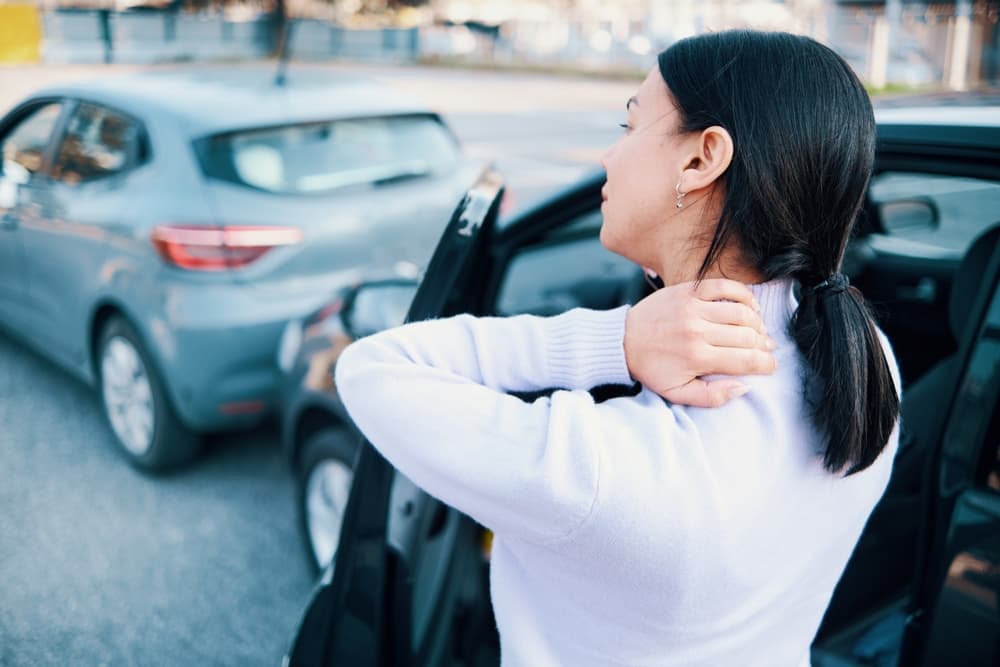This is a question no one wants to face, but accidents involving rideshare drivers are becoming more common in Phoenix, Arizona. Whether you’re behind the wheel, crossing the street, or walking along a sidewalk when it happens, knowing your rights and options can help you move forward.
Accidents with Uber or Lyft drivers can leave victims bearing medical bills, lost wages, and other hardships. Figuring out who pays for those damages and how to pursue compensation can feel difficult, but a rideshare accident lawyer can help you navigate the process. Arizona laws are designed to create a path to recovery after such incidents.
Arizona’s Laws on Rideshare Accidents

Arizona has specific laws governing rideshare apps like Uber and Lyft. These laws require rideshare companies to carry commercial insurance for their drivers while actively working.
However, the type of coverage available will depend on the driver’s status at the time of the accident.
- Offline or Off-Duty Driver: Their personal insurance policy applies if the Uber or Lyft driver was not logged into the app when the accident occurred. Rideshare companies usually do not provide coverage in these situations.
- Available for Rides, Logged into the App: When the driver is logged into the app but hasn't accepted a ride, rideshare companies provide limited coverage. This includes liability coverage of up to $50,000 per person, $100,000 per accident, and $25,000 for property damage.
- En Route to Pick Up a Passenger or Transporting a Passenger: If the driver was on their way to pick up a rider or actively transporting one, Uber and Lyft provide up to $1 million in liability and uninsured/underinsured motorist coverage. This policy steps in if the at-fault party lacks adequate insurance.
Determining Liability After an Accident
Liability is one of the most important aspects when dealing with an accident involving an Uber or Lyft driver. Arizona is a fault-based state, meaning the person responsible for causing the accident must compensate the injured parties.
Here’s how liability can be determined:
- If the Uber or Lyft Driver is at Fault
When the rideshare driver’s negligence, such as failing to follow traffic laws or distracted driving, caused your injuries, Uber or Lyft’s insurance policy may cover your losses. This applies while they are actively working for the app. - If Another Driver Was Responsible
If the accident was caused by another driver’s negligence, their auto insurance will be the primary source of compensation.
However, if this driver is uninsured or underinsured, Uber or Lyft’s insurance might assist if the rideshare driver was en route to a ride or carrying passengers.
- If Multiple Parties Share Responsibility
Some accidents involve shared fault. Arizona’s comparative negligence rule assigns a percentage of fault to each party.
For example, if the rideshare driver and another motorist both contributed to the collision, their respective insurance policies would cover damages based on their share of responsibility.
Compensation Available to Victims
Victims of Uber and Lyft accidents may be eligible for various types of compensation.
Arizona law allows claims for:
- Medical expenses
This includes hospital stays, physical therapy, medications, diagnostic tests, and other treatment costs related to the accident. - Lost wages
If your injuries prevent you from working, you can recover missed paychecks. For severe injuries, claims may also cover reduced future earning capacity. - Pain and suffering
Beyond financial losses, accidents often cause physical pain and emotional distress. Compensation can reflect the ways your life has been affected. - Property damage
Victims can seek reimbursement to repair or replace damaged property, whether it’s a car, bicycle, or personal belongings.
Challenges in Filing a Claim
Rideshare accidents are not always straightforward. Victims often deal with multiple insurance companies, each trying to minimize payouts. Uber and Lyft insurers may try to argue that their driver was not “on the clock” or that liability lies elsewhere.
Instances where multiple parties share responsibility can further complicate matters. For example, a rideshare driver might hit you after swerving to avoid another aggressive driver. Both parties could bear some fault.
Navigating these situations can be tricky for individuals unfamiliar with Arizona traffic laws and insurance policies. Since rideshare accidents often involve sizable compensation, companies may aggressively try to protect their interests.
What If You Were a Pedestrian?
Being hit by a rideshare driver while walking can lead to severe injuries. Pedestrians are highly vulnerable, even in low-speed collisions.
Pedestrian claims work similarly to those involving vehicles. Liability depends on whether the driver was active on the Uber or Lyft app. Arizona enforces a statute of limitations on personal injury claims, so act quickly.
If the rideshare driver was en route to pick up a passenger or transporting one, their $1 million insurance policy would likely apply. However, if they were not logged into the app, their personal insurance policy would be responsible for your claim, which may provide significantly less coverage.
What If the Driver Was Not Logged into the App?
Uber and Lyft’s insurance policies kick in only when the driver is logged into the application and actively working. If the driver hits you while off-duty, their insurance becomes the primary source of compensation.
Many personal insurance policies exclude commercial activity, including rideshare driving. The problems start when the driver lacks proper coverage. Compensation in this scenario may be more difficult, but it’s not impossible.
Arizona’s fault-based system allows victims to pursue claims against negligent drivers directly. However, if the driver lacks adequate personal assets or coverage, their ability to pay damages might be limited.
Arizona’s Statute of Limitations
Under Arizona law, personal injury claims must be filed within two years from the accident date. Missing this deadline means losing your chance to seek compensation.
If a government entity, like a city, is responsible for improper traffic signals or hazardous road conditions, the timeframe shortens significantly. You should not wait to begin your claim.
Acting sooner helps preserve evidence, locate witnesses, and build a strong case.
Insurance companies are also more likely to negotiate meaningfully when claims are filed promptly.
What Happens If the Rideshare Driver Was Using a Borrowed or Leased Vehicle?
Accidents involving Uber or Lyft drivers are complex, but things can become even more complicated when the rideshare driver uses a borrowed or leased vehicle.
These situations require careful consideration of whose insurance applies and how liability is determined under Arizona law. Here’s what you need to know if this happens.
Borrowed vehicles and liability
When an Uber or Lyft driver uses a borrowed car, the first question is whether the vehicle owner permitted it to be used for ridesharing. Most personal auto insurance policies exclude coverage for commercial activities like rideshare driving.
If the owner did not give explicit permission or if the rideshare driver misled them about using the vehicle for such purposes, disputes may arise about which insurance should apply after an accident.
For instance, the car owner's policy may decline coverage entirely due to lack of consent or because the vehicle was used commercially. This leaves the rideshare company’s insurance policy as the primary coverage option, but only if the driver was logged into the app and working at the time of the accident.
Leased vehicles and insurance coverage
Rideshare drivers frequently use leased cars to meet the vehicle requirements of companies like Uber and Lyft. Leased cars often have specific insurance requirements, further complicating the claims process.
The leasing company typically requires the driver to carry insurance that covers collision and liability, but this coverage might not account for commercial use unless explicitly included.
If the driver fails to purchase the necessary rideshare coverage, the company’s insurance policy may need to step in, as long as the app was active during the accident.
For example, if a leased car is involved in an accident while the driver is waiting for a ride request, Uber or Lyft’s limited coverage (up to $50,000 in liability per person) applies.
However, if the driver was not logged into the app, the leasing company’s insurance requirements or the driver’s personal policy would dictate who pays for the damages.
When Disputes Arise Between Insurance Policies
Insurance companies often dispute liability in cases involving borrowed or leased vehicles. The car owner’s insurance, the rideshare driver’s insurance, and the rideshare company’s policy may each attempt to shift responsibility to the others.
This can create delays in resolving claims and leave accident victims unsure where to turn for compensation.
For example:
- If the rideshare driver was using a rented car through a third-party platform partnered with Uber or Lyft, the terms of that rental agreement might include additional coverage options tailored to rideshare usage.
- If the borrowed vehicle’s insurance excludes coverage due to lack of permission or commercial activity, the injured party may need to pursue a claim directly with Uber or Lyft’s insurance provider.
Protecting Yourself After an Accident
If you’re hit by a rideshare driver using a borrowed or leased vehicle, take these steps to protect your claim:
- Confirm the vehicle’s ownership and insurance status at the scene.
- Ask the driver whether they are actively logged into the Uber or Lyft app.
- Record as much information as possible about the leasing relationship (if applicable) or how the driver gained access to the vehicle.
Understanding who is responsible for damages in these cases can feel tricky, but you don’t have to figure it out alone. Reaching out for legal guidance can help you identify which insurance policies apply and ensure your claim is handled properly.
Why Rideshare Accident Claims Require Legal Guidance

Handling the aftermath of a rideshare accident often involves layers of complexity. On the surface, filing a claim may appear straightforward, but determining liability, communicating with various insurers, and ensuring you receive adequate compensation can become overwhelming quickly.
For victims, focusing on recovery should take precedence over these logistical concerns. During this process, having a knowledgeable advocate can make all the difference.
Someone familiar with Phoenix traffic laws and accident claims can help clarify insurance coverage, negotiate on your behalf, and secure the best outcome for your situation.
If you’ve been injured in a rideshare accident, the Kurtz Riley Law Group team is here to listen to your story. We’re committed to helping you find the best path forward. Call us today at (623) 303-5754 to discuss your options.